Two bodies A and B of masses 5 kg and 10 kg in contact with each other rest on a table against a rigid wall Fig. 5.21. The coefficient of friction between the bodies and the table is 0.15. A force of 200 N is applied horizontally to A. What are a the reaction of the partition b the action-reaction forces between A and B? What happens when the wall is removed? Does the answer to b change when the bodies are in motion? Ignore the difference between μs and μk.
Mass of body A mA = 5 kgMass of body B mB = 10 kgApplied force F = 200 NCoefficient of friction μs = 0.15The force of friction is given by the relation:fs = μ mA +mBg= 0.15 5 + 10 × 10= 1.5 × 15 = 22.5 N leftwardNet force acting on the partition = 200 – 22.5 = 177.5 N rightwardAs per Newton’s third law of motion the reaction force of the partition will be in the direction opposite to the net applied force.Hence the reaction of the partition will be 177.5 N in the leftward direction.Force of friction on mass A:fA = μmAg= 0.15 × 5 × 10 = 7.5 N leftwardNet force exerted by mass A on mass B = 200 – 7.5 = 192.5 N rightwardAs per Newton’s third law of motion an equal amount of reaction force will be exerted by mass B on mass A i.e. 192.5 N acting leftward.When the wall is removed the two bodies will move in the direction of the applied force.Net force acting on the moving system = 177.5 NThe equation of motion for the system of accelerationa can be written as:Net force exerted by mass A on mass B = 192.5 – 59.15 = 133.35 NThis force will act in the direction of motion. As per Newton’s third law of motion an equal amount of force will be exerted by mass B on mass A i.e. 133.3 N acting opposite to the direction of motion.
Related Solutions
Two bodies A and B of masses 5 kg and 10 kg in contact with each other rest on a table against a rigid wall (Fig. 5.21). The coefficient of friction between the bodies and the table is 0.15. A force of 200 N is applied horizontally to A. What are :- the reaction of the partition.
View SolutionTwo bodies A and B of masses 5 kg and 10 kg in contact with each other rest on a table against a rigid wall (Fig) . The coefficient of friction between the bodies and the table is . A force of 200 N is applied horizontally to A . What are (a) the reaction of the partition (b) the action -reaction forces between A and B ? What happens when the wall is removed ? Does the answer to (b) change , when the bodies are in motion ? Ignore the difference are in motion ? Ignore the difference between
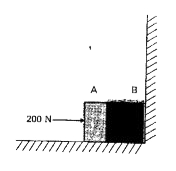
View SolutionTwo bodies A and B of masses 5 kg and 10 kg in contact with each other rest on a table against a rigid wall as shown in fig. The coefficient of friction between the bodies and the table is 0.15. A force 200 N is applied horizontally to A. What are (a) the reaction of the partition (b) the action-reaction forces between A and B ? (c) What happens when the wall is removed? Does the answer to (b) change, when the bodies are in motion? Ignore the difference between mu_(s) and mu_(k)
View SolutionTwo bodies A and B of masses 5 kg and 10 kg in contact with each other rest on a table against a rigid wall as shown in figure. The coefficient of friction between the bodies and the table is 0.15. A force of 200 N is applied horizontally to A. What are (a) the reaction of the partition, (b) The action-reaction forces between A and B ? What happens when the wall is removed ? Does the answer to (b) change, when the bodies are in motion ? Ignore the difference between p_(s) and p_(k) .
View SolutionTwo bodies A and B of masses 5 kg and 10 kg in contact with each other rest on a table against a rigid wall . The coefficient of friction between the bodies and the table is 0.15. A force of 200 N is applied horizontally to A. What are (a) the reaction of the partition (b) the action-reaction forces between A and B ? What happens when the wall is removed? Does the answer to (b) change, when the bodies are in motion? Ignore the difference between and
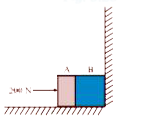
View SolutionTwo bodies A and B of masses 5 kg and 10 kg in contact with each other rest on a table against a rigid wall . The coefficient of friction between the bodies and the table is 0.15. A force of 200 N is applied horizontally to A. What are (a) the reaction of the partition (b) the action-reaction forces between A and B ? What happens when the wall is removed? Does the answer to (b) change, when the bodies are in motion? Ignore the difference between and
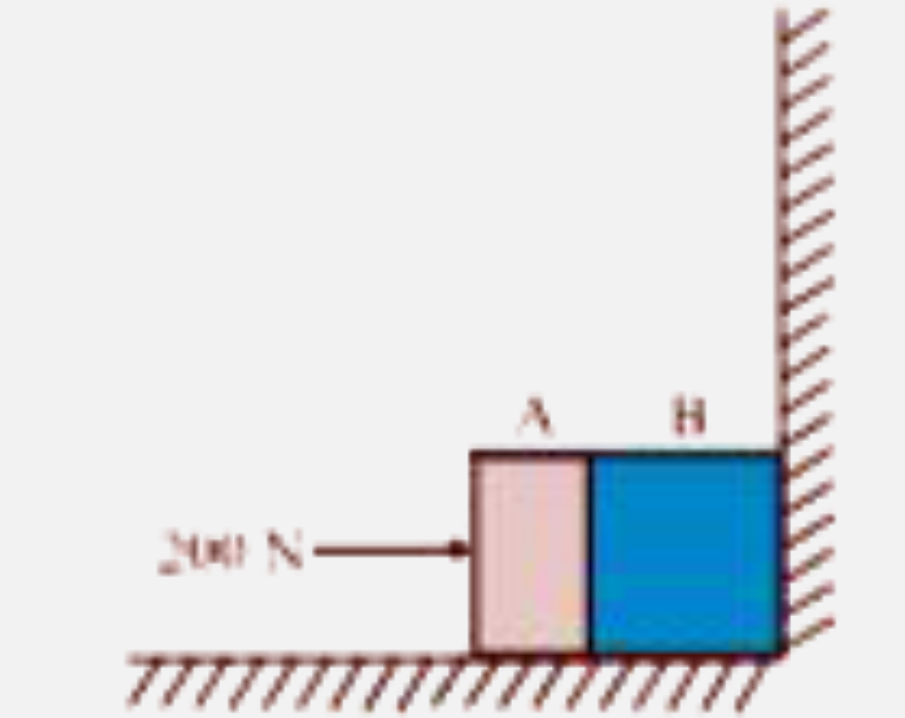
View SolutionTwo bodies A and B of masses 5 kg and 10 kg in contact with each other rest on a table against a rigid wall . The coefficient of friction between the bodies and the table is 0.15. A force of 200 N is applied horizontally to A. What are (a) the reaction of the partition (b) the action-reaction forces between A and B ? What happens when the wall is removed? Does the answer to (b) change, when the bodies are in motion? Ignore the difference between and
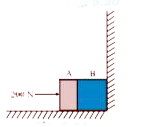
View Solution5 kg અને 10 kg દળના બે પદાર્થો A અને B , ટેબલ પર એકબીજાની સાથે સંપર્કમાં અને દીવાલને અડીને રહેલા છે ( આકૃતિ 5.21 ) પદાર્થો અને ટેબલ વચ્ચેનો ઘર્ષણાંક 0.15 છે . 200 Nનું એક બળ A પર સમક્ષિતિજ લગાડવામાં આવે છે . દીવાલનું પ્રતિક્રિયાબળ
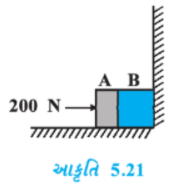
View SolutionTwo bodies A and B of mass 5 kg and 10 kg contact with each other rest on a table against a rigid The coefficient of friction between the bodies and the table is 0.15 A force of 200 N is applied horizontal on A What are (a) the reaction of thee wall (b) the the action , reaction forces between A & B ? What happens when the wall is removed ? Does the answer to (b) Change , when the bodies are in motion ? Ignore differnce between and
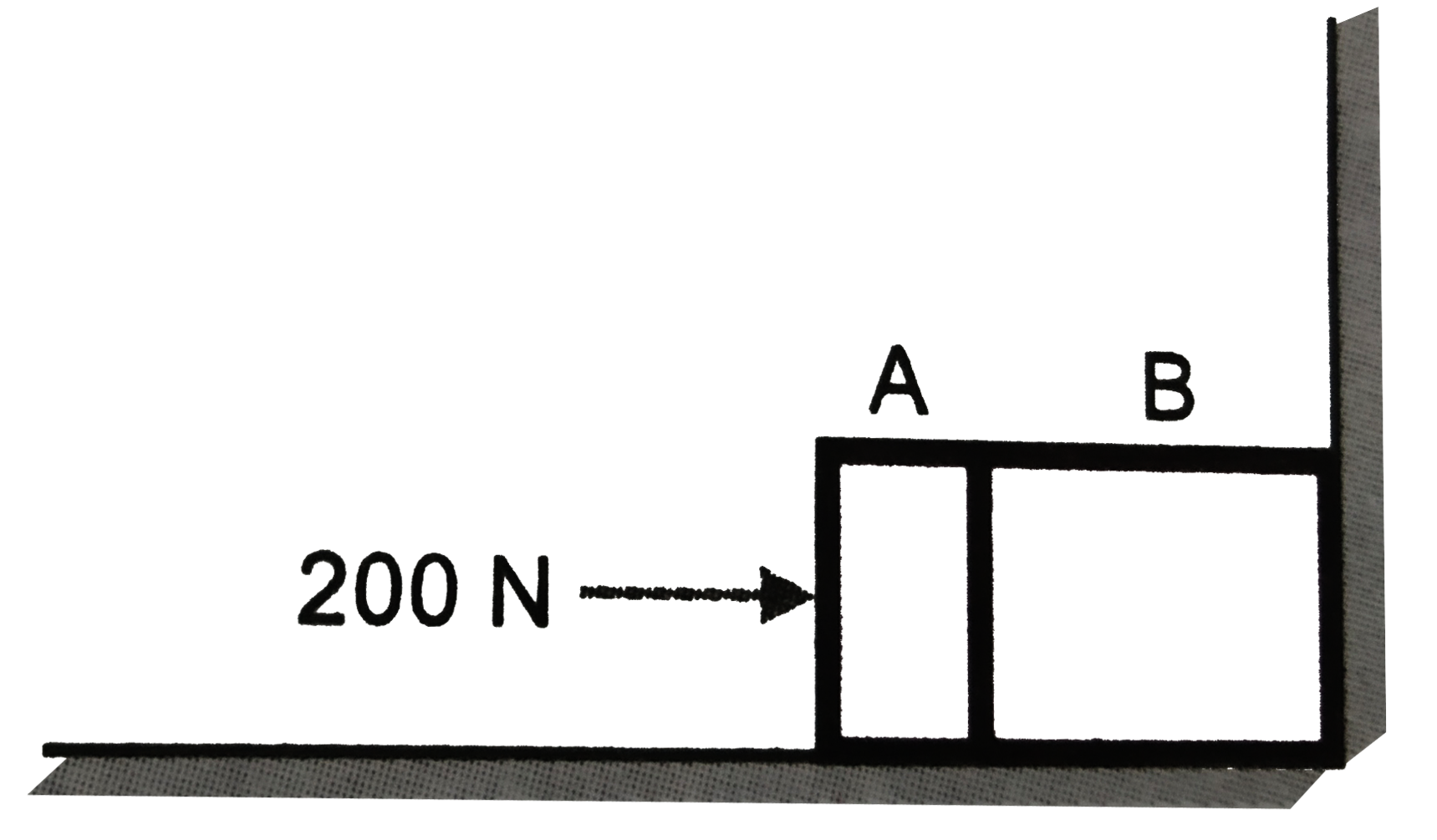 .
.
View SolutionTwo bodies A and B of mass 5 kg and 10 kg contact with each other rest on a table against a rigid The coefficient of friction between the bodies and the table is 0.05 A force of 200 N is applied horizontal on A What are (a) the reaction of thee wall (b) the the action , reaction forces between A & B ? What happens when the wall is removed ? Does the answer to (b) Change , when the bodies are in motion ? Ignore differnce between and
 .
.
View SolutionTwo bodies A and B of mass 5 kg and 10 kg contact with each other rest on a table against a rigid The coefficient of friction between the bodies and the table is 0.05 A force of 200 N is applied horizontal on A What are (a) the reaction of thee wall (b) the the action , reaction forces between A & B ? What happens when the wall is removed ? Does the answer to (b) Change , when the bodies are in motion ? Ignore differnce between and
 .
.
View SolutionTwo bodies A,B of masses 5 kg and 10 kg in contact with each other rest on a table against a rigid wall. The coefficient of friction between the bodies and the table is 0.15. A force of 200 N is applied horizontally to A. (i) What is the reaction of the partition? (ii) The actionreaction forces between A,B? (iii) What happens when the wall is removed ? Does the answer to (ii) change when bodies are in motion ? [ Ignore the difference between mu_(s) and mu_(k) ]
View Solutionदो पिण्ड A तथा B जिनकी संहति क्रमशः 5 kg तथा 10 kg है, एक दूसरे के संपर्क में एक मेज पर किसी दृढ विभाजक दीवार के सामने विराम में रखे है (चित्र) पिण्डों तथा मेज के बीच घर्षण गुणांक 0.15 है। 200 N का कोई बल क्षैतिजत: A पर आरोपित किया जाता है। (a) विभाजक दीवार कि प्रतिक्रिया, तथा (b) A तथा B के बीच क्रिया-प्रतिक्रिया बल क्या है? विभाजक दीवार को हटाने पर क्या होता है? यदि पिण्ड गतिशील है तो क्या (b) का उत्तर बदल जाएगा ? तथा के बीच अंतर कि उपेक्षा कीजिए ।
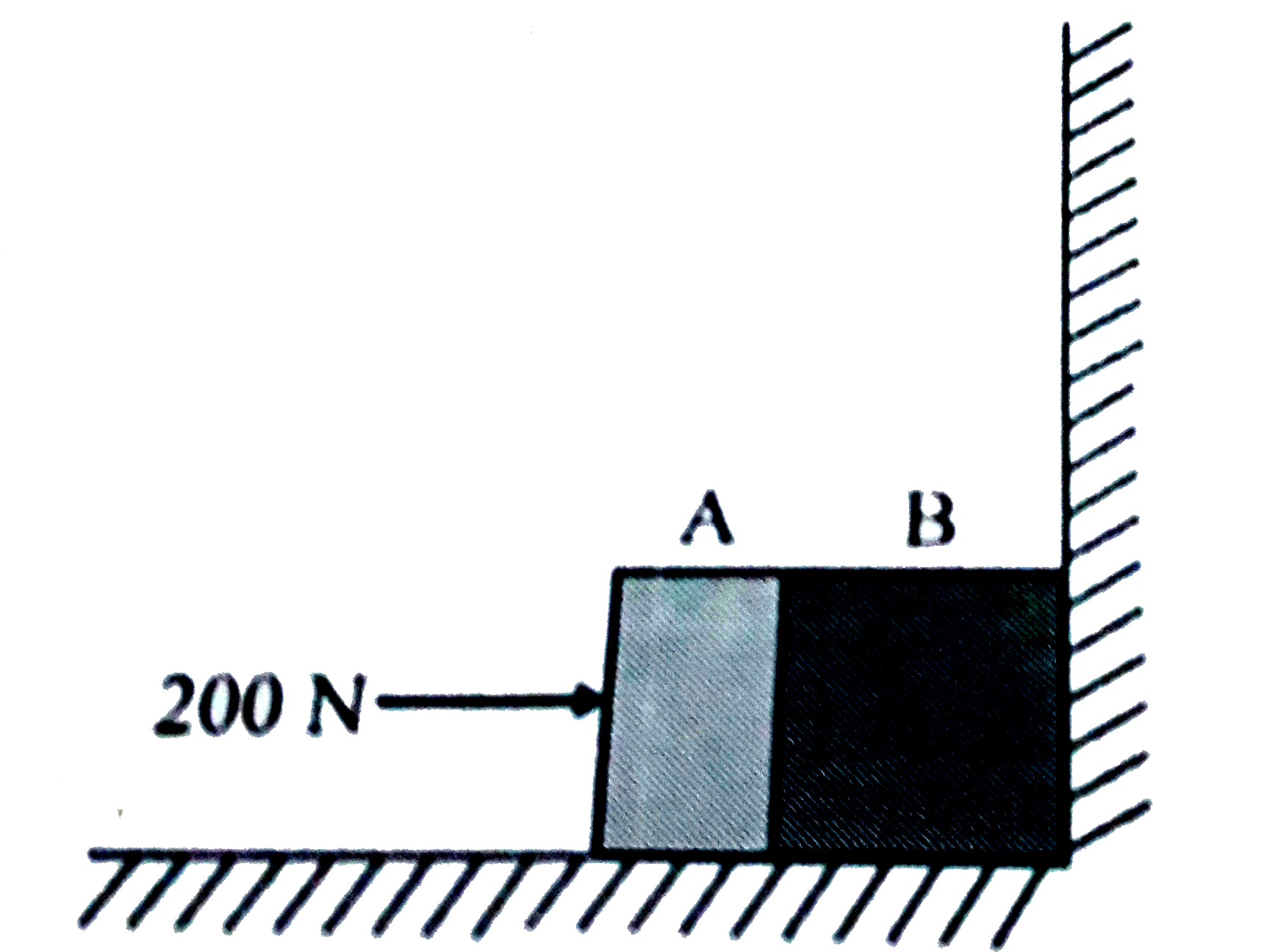
View SolutionTwo bodies A and B of mass 5 kg and 10 kg contact with each other rest on a table against a rigid The coefficient of friction between the bodies and the table is 0.05 A force of 200 N is applied horizontal on A What are (a) the reaction of thee wall (b) the the action , reaction forces between A & B ? What happens when the wall is removed ? Does the answer to (b) Change , when the bodies are in motion ? Ignore differnce between and
 .
.
View Solutionदो पिंड A तथा B, जिनकी सहती क्रमशः 5 kg तथा 10 kg है, एक-दूसरे के समैक में एक मेज पर किसी दर्द विभाजक दीवार के सामने विराम में रखे है (चित्र) । पिंडों तथा मेज के बिच घर्षण गुणांक 0.15 है 200 N का कोई बल क्षेतिजतः A पर आरोपित किया जाता है (a) विभाजक दिवार की प्रतिक्रिया, तथा (b) A तथा बीके बिच क्रिया-प्रतिक्रिया बल क्या है ? विभ्कजक दिवार को हटाने पर क्या होता है यदि पिंड गतिशील है तो क्या (v ) का उतर बदल जायेगा ? तथा के बिच अंतर की अपेक्षा कीजिय |
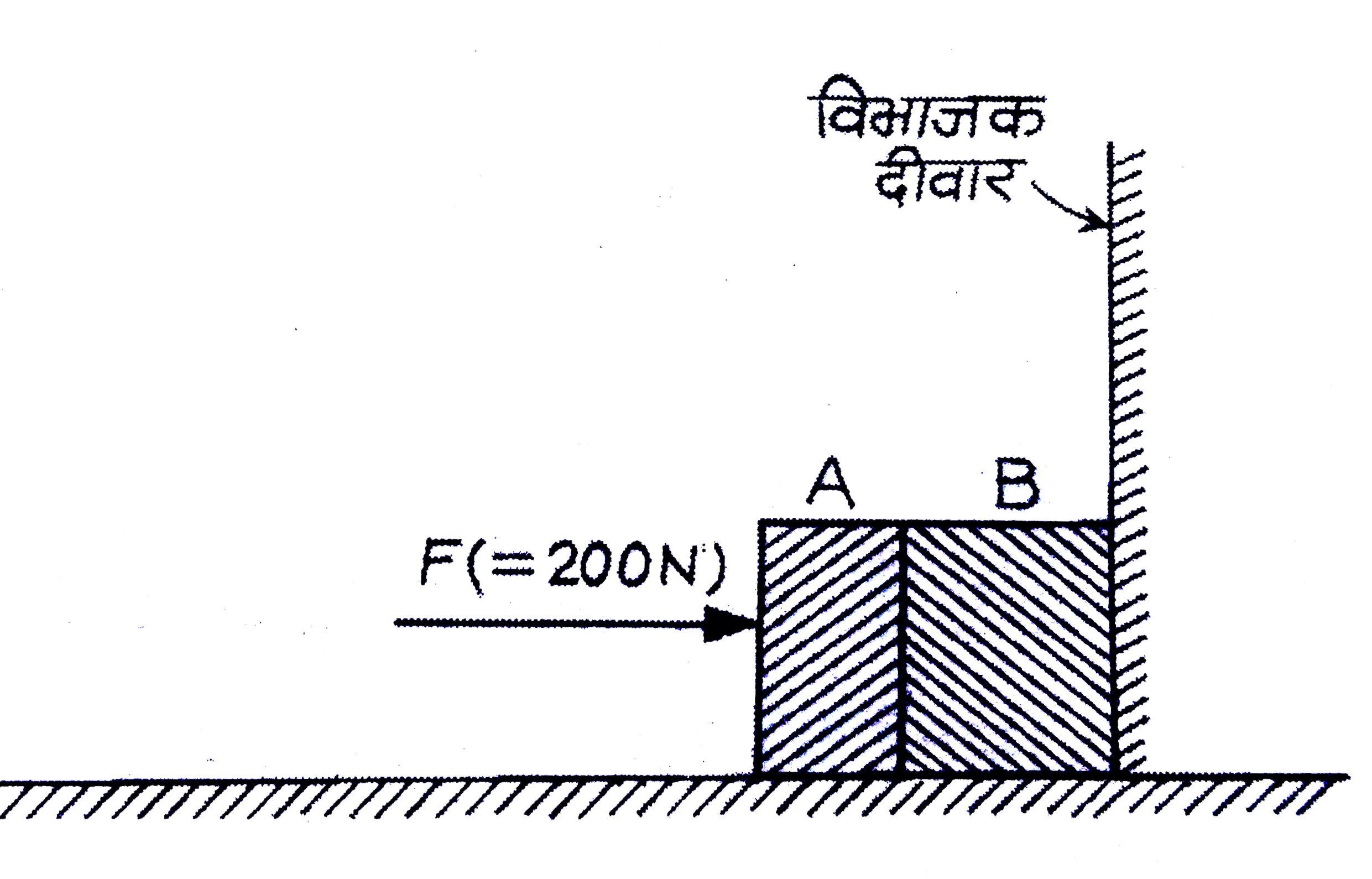
View SolutionA and B, two objects of force 5 kg and 10 kg, are in contact with each other on the table and adjacent to the wall (Figure 5.21). The friction between the objects and the table is 0.15. A force of 200 N is applied horizontally to A. Find the forces of interaction between A and B. What happens when the wall is removed? Will the response to (b) change when objects are in motion? mu_s And mu_k Ignore the difference between the two.
View SolutionA body of mass 2 kg at rest on a horizontal table. The coefficient of friction between the body and the table is 0.3 . A force of 5N is applied on the body. The force of friction is
View Solution2 kg द्रव्यमान का एक गुटका (A), 8 kg द्रव्यमान के गुटके (B) जो कि क्षैतिज टेबल पर स्थिर है, पर रखा हुआ है (A) व (B) के मध्य घर्षण गुणांक 0.2 तथा (B) व टेबल के मध्य घर्षण गुणांक 0.5 है। 25 N का क्षैतिज बल (B) पर लगाया जाये तो (A) व (B) के मध्य घर्षण बल होगा :-
View SolutionA body of mass 2 kg is kept by pressing to a vertical wall by a force of 100 N . The coefficient of friction between wall and body is 0.3. Then the frictional force is equal to
View SolutionTwo blocks of masses 2 kg and 1 kg are in contact with each other on a frictionless table. When a horizontal force of N is applied to the block of mass 2 kg the value of the force of contact between the two blocks is:
View Solution